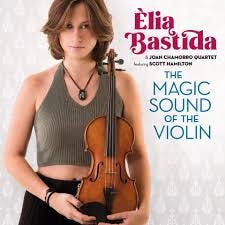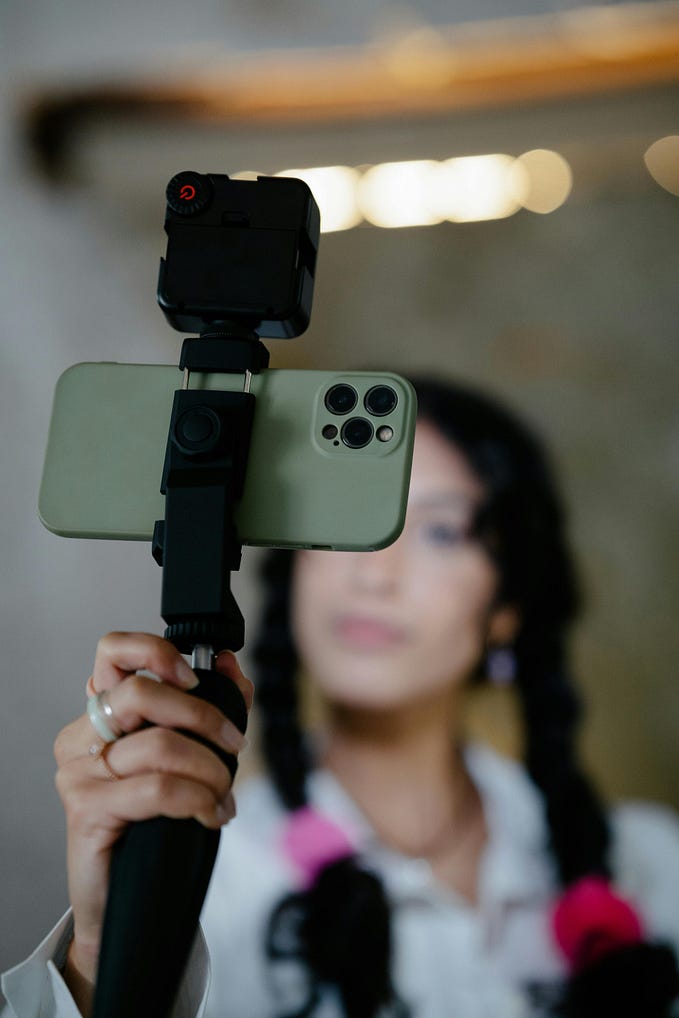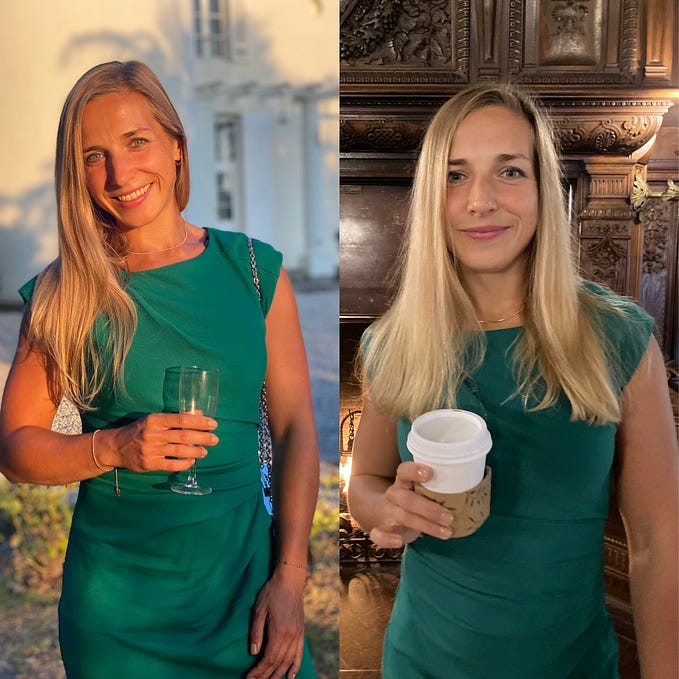The Magic of the Voice: The Singers of the Sant Andreu Jazz Band
On New Year’s Day, I published an article about Barcelona’s Sant Andreu Jazz Band, a project created and directed by Joan Chamorro in 2006, in which Barcelona’s youngest and most talented musicians, ranging from as young as 8 to about 21 years old, are given an intense but loving and supportive education in jazz — from Dixieland, to standards out of the “Great American Songbook” and the big bands of the 1930s and ’40s, to lilting Brazilian bossa nova classics — resulting in concerts and recordings that have, for nearly fifteen years, presented the kids’ remarkable skills and feel for the musical art form of jazz.

In that article from January, I offered a thumbnail history of the SAJB. The focus of this piece is on the singers — all of whom, remember, are outstanding musicians in their own right, and many are multi-instrumentalists as well.
From its early days as a band, Chamorro has encouraged the pursuit of jazz singing as well as musicianship for his students, as seen in the Ramon Tort documentary, A Film About Kids and Music, released in 2012, in which singing teacher Monste Jorba is seen with students Andrea Motis, Magali Datzira, and Eva Fernandez (when the SAJB was still part of the Escola Municipal de Musica de Sant Andreu).
But a big part of Chamorro’s teaching philosophy is to have his students learn by ear, listening to the original artists’ recordings, in addition to taking traditional private music lessons. “Basically they learned their songs by listening to the great singers and improving day by day, through listening.” He elaborates: “One part of the process is to look for good references — Clifford Brown, for example — make them known to the student and say, ‘look how beautiful! Listen to it, sing it, and little by little, without hurry, but without pauses, try to play it with your instrument.’ The student listens and sings and repeats and assimilates, and in his [or her] unconscious, the love that is necessary to dedicate time to your instrument is entering without anybody forcing you — and to the music, without more goal for the moment,[other than]to enjoy playing.”
Some of the guys have dabbled as vocalists from time to time, but the highest-profile musician-singers in the band have always been the girls. This is not to take anything away from the non-singing members, who possess musicianship that — if you were to close your eyes as you listen to them play — can easily be mistaken for some of the great big bands of swing’s Golden Era.

The girls through the years have all consistently demonstrated an ever-growing familiarity with several jazz singing styles, including their proficiency with singing the English lyrics to the American standards (and Portuguese for the Brazilian tunes). “They learn the language in their schools,” Chamorro told me, “where they basically do English as a second language. Besides, they listen a lot to singers and imitate them … not all of them have to work the same way. But when working so young, [learning is]very easy.” The same goes for the bossa nova songs in Portuguese, where they have had the help of Ana Moreira — mother of Marçal Perramon, tenor sax of the SAJB — who is Portuguese, and who has helped them a great deal with proper pronunciation.
And, just as the learning process on a given instrument can vary somewhat from one student to the next, so does singing. “I believe that they are all different,” Chamorro says, “and that the process, as in the young instrumentalists, is different in each person. Maturity in improvisation comes with time, as does having a voice of its own and developing a discourse of its own, a personality. That a person can have it at 15 does not mean that all people have to at that age. My job, in part, is to believe that wonderful things can be achieved with daily work. The same thing happens with the voice.”
This video has preserved the first time Andrea sang a jazz song in public. She was 13 years old, and, Chamorro says, “that was when I decided to record a CD with her.”

Thus, the first album to feature an individual SAJB musician was Joan Chamorro presenta Andrea Motis, recorded in 2010 when Andrea was 14, and quickly gaining the reputation as a true jazz prodigy by any standard. She, Chamorro, and her father Ramon had already turned down contract offers from two major American jazz labels, agreeing that the time just wasn’t right yet for Andrea to take such a big step. “We all believe it was a good decision. She has been able to record freely for several years and record her evolution with many CDs, both her own and other CDs…about 40 recordings (6 co-leading the group next to me, 2 as absolute leader and another 30 as sidewoman).”
This debut album was followed by individual debut CDs by SAJB saxophonist Eva Fernandez, bassist Magali Datzira, and trombonist Rita Payes — each with as much emphasis on their singing as on their dazzling musicianship.
By 2014, Chamorro knew he had a talented and appealing lineup of vocalists who, together, would do justice to the songs made famous by four legendary American jazz singers. He produced the album La Magia de la Veu (The Magic of the Voice), featuring Magali (singing Billie Holiday), Eva (Dinah Washington), Andrea (Sarah Vaughan), and Rita(Ella Fitzgerald).

As he wrote at the time, “It is my wish, for those who didn’t know the vocal jazz, that through this work and these young voices they become curious about and begin a journey of discovery of what may be a source of immense pleasure: Billie, Ella, Dinah, Sarah and other many voices, male and female, are waiting for them.”
Indeed, the young quartet succeeded in doing just that throughout the album, by not only by expressing their admiration and respect for those legends, but by introducing their own, personal sounds and voices together to the world. Andrea and Eva are naturally suited to the American standards; Magali is especially adept at channeling the haunting, raw emotions of Billie Holiday and others, and Rita’s soft, husky tone (bringing to mind the voice of Peppermint Patty on the “Peanuts” TV specials) shines with her bossa nova renditions. Yet this oversimplifies their skills as singers, as all of these young ladies excel at just about any jazz style you could ask of them. What is all the more remarkable is that, at the time of La Magia de la Veu, the eldest, Eva, was only 20, and youngest, Rita, was only 15, yet their amazing understanding and feeling for jazz singing and musicianship was already clearly evident.
Also, their undeniable charisma onstage made them the most familiar and popular members of the band (with each having her own legion of devoted enthusiasts). Better still, their comaraderie proved to be nothing less than joyous, such as in this performance of How High The Moon at Barcelona’s Jamboree jazz club to promote the album:
Considering the constant evolution and fluid nature of the SAJB, with older musicians “graduating” as new replacements join the band and, in time, move up the ranks, the performances of this particular “Fab Four” or “A-Team” (as they’ve been nicknamed by fans) seems almost like ancient history by now — if you consider about six years to be ancient history. Chamorro estimates about sixty students have been part of the SAJB since its inception. There has always been some overlap of the generations of band members; the steady stream of new talent can make it challenging for fans to keep pace with the ever-changing personnel in the band. Yet the consistency of excellence has remained remarkably high.
With the departure, then, of original stars Andrea, Rita, Magali and Eva at various points in time, younger promising stars have been brought to the fore. For the singers, trumpeter Alba Armengou and violinist/saxophonist Elia Bastida began to take over many of the vocal duties with increasing regularity. Drummer and trumpeter Abril Sauri and baritone sax stalwart Alba Esteban have taken their turns on lead vocals as well.

Two years following the release of the original Magic of the Voice album, Chamorro produced a follow-up with this younger group of singers. As he puts it, the album is “dedicated especially to the voice, but trying to make the arrangements more instrumental and with four new voices, all of them also polyinstrumentists.” His regular trio of musical veterans — Ignasi Terraza on piano, Josep Traver on guitar, and Esteve Pi on drums — was augmented by several members of the SAJB: Joan Mar Sauqué (trumpet and trombone) Joan Codina (trombone) Joan Martí (alto saxos and tenor) and Marçal Perramon (tenor and baritone saxons and clarinet), all arranged by Barcelona pianist/arranger Joan Monne.

As Elia told me, “My first instrument, and where I think that I give more original ‘things’ is the violin, but I love also to sing, and play saxophone. I love singing ‘bossa nova’ and Brasilian music. Joan always gives you the possibility to sing if you want to do it, and if he thinks that it can be a good thing. I don’t remember if it was him or me [who suggested that I sing], but I remember that step by step Joan gave me songs to sing.”
Alba Armengou began dazzling audiences of the SAJB with her trumpet-playing potential when she was just 8 years old, and, upon reaching her teens, began to do likewise with her singing. She can impressively belt out a swing number like “Nobody Else But Me” with the big band (which I heartily recommend you see),but she also shares Elia’s penchant for bossa nova.
Here’s Alba singing lead on Antonio Carlos Jobim’s “Triste” at the showcase performance for the album, with back-up vocals by Andrea, Elia, and Rita.
As Chomorro explained then, “In the heart of the Sant Andreu Jazz Band, a project that turns 10 years old at the time of the appearance of this new CD, the voice acquires more and more relevance. I understand this wonderful instrument as a very important part of the musician, beyond which I can subsequently use it professionally or not. I am interested in the connection of the inner ear with the instrument, and that connection becomes palpable with the singing. That is why I encourage all my students — and myself — to sing and also to listen to singers, because from them and they we can learn many things in terms of phrasing, rhythm, expression … I also understand that our capacity for improvisation and creation is not only given by our knowledge of harmony and our mastery of the instrument, but also by our ability to imagine (sing inside or out), melodies.”
Elia agrees with the connection between playing and singing. “I think being a musician helps as a singer, and being a singer helps me as a musician. And the same thing with playing the saxophone helps me to play violin jazz, etc…. Whatever you do as a musician will enrich all your ‘facets’ as a musician. Because the musician is you, with all the music that you have inside you, that will come out for the instruments that you play!”
Alba Esteban has been one of the true anchors of the band’s saxophone section for nearly a decade, playing mostly baritone sax with considerable skill and an unshakable reliability. As well as taking more frequent sax solos in recent years, she has also been encouraged to step up to the microphone to sing on occasion, giving her some well-deserved time in the spotlight.
Yet another shining SAJB star with great promise is Joana Casanova, saxophonist and singer who seems especially comfortable fronting the big band’s swing numbers. She has a way of letting her voice drop deep for certain words and phrases that makes her vocal stylings not only quite distinctive, but, to my ears, downright irresistible. Her debut CD is due to be released sometime this year.
In April, the singers will record a new, live La Magia de la Veu album,the third in the series, accompanied by the SAJB, with alumus Andrea as guest.

Elia, Abril, and guitarist Carla Motis have recently left the SAJB big band, but Elia, Carla, and Alba Armengou, with Chamorro, have formed The New Quartet, which will no doubt have a CD on the way before long.

It’s also worth mentioning again that there is an entire series of Joan Chamorro Presenta… albums, that began with Andrea’s debut, and continues to this day, with each release featuring an individual musician and/or singer backed by various SAJB musicians. Among the guys to have recorded their own freshman CDs include trumpeter Joan Mar Sauque, trombonist Joan Codina, and pianist Marc Martin. These are in addition to the other series of SAJB big band Jazzing releases, dating back to 2009. All told, there are more CD releases than I probably have the strength to count; the live performances— with nearly every conceivable combination of musicians and venues — as well as those recorded in studio sessions, are preserved on video and available to view on YouTube (nearly 1,000 of them). You can find all of the SAJB and individual artists’ CDs at www.jazztojazz.com, and, of course, at www.Amazon.com.
And, even with such a vibrant musical history spanning a relatively brief 14 years, the new, young musicians keep on coming. The tireless Chamorro recently posted this photo of his current trumpet section, led by veterans Alba and Elsa Armengou (who, remember, are still in their teens), as a reminder that there will always be new, aspiring musicians for us fans to follow, as they grow into their roles within the SAJB.

Noa Galgo (14) Max Munné (11), Martha Vives (15) Alba Armengou (18), Elsa Armengou (15),and Gerard Peñaranda (13) comprise the section that was once led by Joan Mar Sauqué and Andrea Motis.
Again, the videos I’ve included in this piece don’t even begin to scratch the surface. It was painful to omit many of the most compelling and exciting vocal performances, and if I’ve given anyone short shrift, it certainly wasn’t intentional. So, I recommend using any or all of these as merely a starting point, should you decide to visit YouTube for more. As countless viewers — including myself — have commented, these SAJB videos are extremely addictive. The hours can fly by as you click from one to another. You have been warned!
Until next time…
Please click the “follow” button and follow me on Medium for future articles on The SAJB, popular culture, music, film, and television. You can read my previous articles about the SAJB at the links below, or at the “Garry’s Blog” page on my website: www.GarryBerman.com.
You can also become a member in the Medium Partner Program for a modest fee to help support my writing. https://garryberman.medium.com/membership
Please visit www.GarryBerman.com to read synopses and reviews of my books, and order them via the links to Amazon.com.
“When American Jazz Pros Meet Spanish Jazz Kids” https://medium.com/p/25c7f5023571/edit
“Josep Traver: Guitarist of all Trades” https://garryberman.medium.com/josep-traver-guitarist-of-all-trades-608296f9d00a
“Claudia Rostey: The Life of an 18-year-old Bacelona Jazz Trombonist” https://garryberman.medium.com/claudia-rostey-the-life-of-an-18-year-old-barcelona-jazz-trombonist-d13b82c770a3
“Jobim is Alive and Well in Barcelona” https://garryberman.medium.com/jobim-is-alive-and-well-in-barcelona-d384b40d8c2e
“Did Someone Say Anastasia Ivanova?” https://garryberman.medium.com/did-someone-say-anastasia-ivanova-dd6f67277c64
“Struck by (musical) Lightning” https://garryberman.medium.com/struck-by-musical-lightning-6583ecb0de13
Sant Andreu Jazz Band CDs are available at: https://jazztojazz.com/ , eBay, and Amazon.com.








